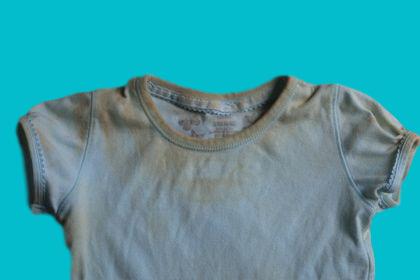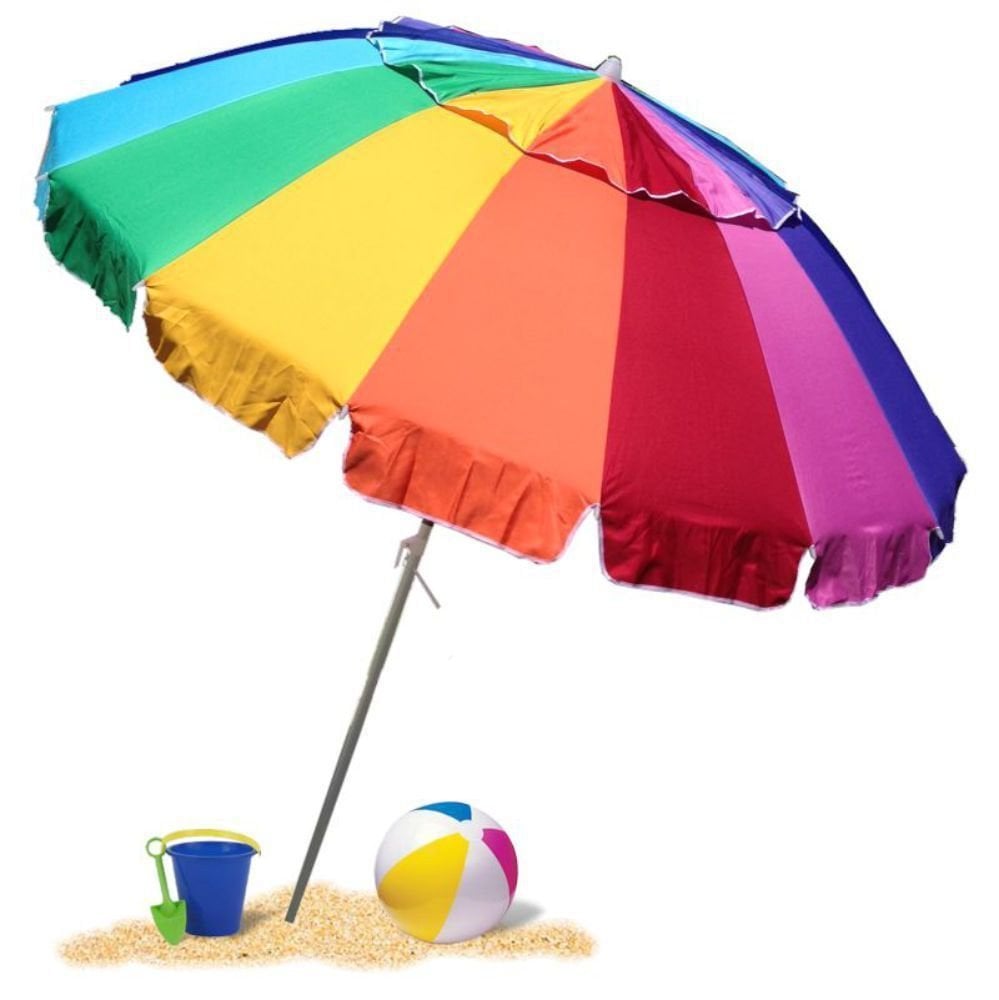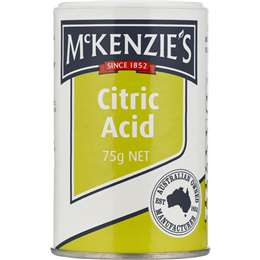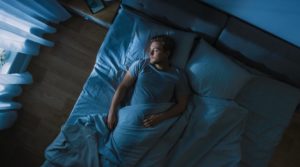
Ever put your new white running singlet in the wash, only for it to come out with horrible brownish stains on it?
Or do your shirts look like you’ve been drooling your dinner down the front of them after a few wears?
The culprit could be sunscreen… or it could be “scrud”
So How Do You Prevent Sunscreen Stains?

What is Avobenzone?
Avobenzone is a chemical used in sunscreens which protects against the harmful effects of long ray UVA. Which is really good if you want to run outside in the sun, but not so good if you want to keep your running gear free of the nasty orangey stains it can cause!
Avobenzone will react with water that has a high iron content (hard water) and cause rust stains. So you can put an unstained shirt into the wash, which has invisible deposits of sunscreen on it, and hey presto, you can pull a pretty dirty shirt out of the wash!
But, the good news is there are some avobenzone free sunscreens. You can look at the list of ingredients on your sunscreen, or you can see the list I’ve put together below for some avobenzone free screens. Some of those are readily available in Australia, whilst some you would need to buy online.
When looking at the list of ingredients, be aware that Avobenzone is also know as:
- Parsol 1789
- Milestab 1789
- Eusolex 9020
- Escalol 517
- Neo Heliopan 357
- Butyl Methoxydibenzoylmethane
Avobenzone-Free Sunscreens
- Blue Lizard Sunscreen Sensitive
- Little Urchin Natural Sunscreen
- Nutragena Pure and Free Baby Sunscreen
- Sunology Natural Sunscreen SPF 50+
- Elta MD SkinCare UV Clear Broad Spectrum SPF 46
- Biore UV Aqua Rich Watery Essence 2014 SPF50+
- Thinkbaby Sunscreen SPF 50
Don’t Fall for “Chemical Free”
When it comes to sunscreens (and most other things), there’s no such thing as “chemical free”. In it’s truest definition, a chemical is any substance consisting of matter. So that pretty much covers everything other than energy, thoughts and gravity. Chemicals occur naturally, or can be man made.
I found quite a few “chemical free” sunscreens when I was searching for avobenzone free screens which contained butyl-methoxydibenzoylmethane, so you do need to read the ingredients list carefully.
Here’s the ingredients list of one so-called chemical-free sunscreen!!
Water, C12-15 Alkyl Benzoate, Dicaprylyl Carbonate, Cyclopentasiloxane, Butyl- Methoxydibenzoylmethane, Isohexadecane, Octocrylene, Phenyl Trimethicone, Titanium Dioxide, Glycerin, Methylpropanediol, Octyldodecanol, Boron Nitride, Ethylhexyl Triazone, Iron Oxide, Tapioca Starch Polymethylsilsesquioxane, Bis-Ethylhexyloxyphenol Methoxyphenyl Triazine, Diethylhexyl 2,6-Naphthalate, Ethylhexyl Methoxycinnamate, Lauryl PEG-10 Tris(Trimethylsiloxy)Silylethyl Dimethicone, Polymethylsilsesquioxane, Saccharide Isomerate, Octyldodecyl Xyloside, Camellia Sinensis (Green Tea) Leaf Extract, Terminalia Ferdinandiana (Kakadu Plum) Fruit Extract, Aloe Barbadensis Extract, PEG-30, Dipolyhydroxystearate, Cera Alba, Menthyl Lactate, Triacontanyl PVP, Zinc Stearate, Dimethicone, Magnesium Sulphate, Silica, Caprylyl Glycol, Silica Silylate, Sodium Citrate, Hydroxyethyl – Acrylate/Sodium Acryloyldimethyl Taurate Copolymer, Alumina, Disodium EDTA, Phenylpropanol, Ethylhexylglycerin, Citric Acid, Phenoxyethanol, 1,2-Hexanediol, Fragrance
Other Sunscreen Ingredients That Can Stain Your Clothes
Whilst avobenzone is likely to react with your washing water and cause brown stains on white or light coloured clothing, the active ingredient in many avobenzone -free sunscreens is zinc oxide. Many also contain titanium oxide.
Unfortunately, these 2 ingredients can cause white discolouration on dark fabrics.
Believe it or not, someone has actually published research on this topic, which you can read here. It’s only a couple of pages, and does list the sunscreens which perform best on dark and light colours. One drawback of the research was that they only tested cottons.
Anything that is made to remove rust stains and hard water stains should get rid of the sunscreen stains on your clothing, but you might prefer to try to use something less harsh first.
Removing Sunscreen Stains From Light Coloured Clothing
Lemon Juice and Salt
For a far less toxic solution, try lemon juice and salt.
- Rinse the garment in cool water
- Apply the lemon juice to the stain
- Spread salt liberally over the stained area.
- Let sit overnight, brush off the salt and wash as usual.
Citric Acid and Vinegar

Avobenzone combines with the iron in your water, holding the iron to your clothing to form stains. Citric acid is an iron chelator, so it will bind very tightly to the iron and remove it from your clothing. You can find citric acid in the cooking section of the super market, near the baking soda.
- Form a paste of citric acid and vinegar
- Rub gently on your clothing
- Leave for up to an hour
- Rinse well and re-wash
Pre-Wash Treatment
Another option is to treat your clothes before they go in the wash. Of course, it’s a bit of a guess as to what garments, and what parts of the each garment you can treat, but if you assume ALL your running gear will have sunscreen around the neckline and treat accordingly, this might work.
- Make sure your clothing is dry
- Sprinkle bicarbonate of soda on to the suspected trouble spots. That absorbs any excess oil.
- Leave for about 30 minutes, then brush of any excess powder
- Rub the are with dish washing liquid and leave for 5 minutes.
- Mix a teaspoon of laundry detergent into a bowl of hot water, and soak the garment for an hour
- Rinse in hot water, and throw into the wash
This may work as a post wash treatment, once the stains are visible, but the point of the carb soda is to absorb the oil and remove as much of the sunscreen as possible. Once washed, particularly if in a warm wash, the oil left in the garment is probably minimal.
Hard Core Chemical Solutions

The white marks which some sunscreens leave on dark coloured clothing is caused by zinc oxide or titanium oxide.
To remove, try dabbing with rubbing alcohol. You can get rubbing alcohol in most chemists.
What in the World is Scrud and How Do You Stop It?
For several years, my husband and I put up with a washing machine that was leaving brown spots on our laundry. Not just running gear, all sorts of things from T-shirts to sheets, undies to towels, and everything in between. It was seemingly random, though it did seem to happen more frequently to sweat wicking, dry-fit type clothing.
Many washing machine mechanics later, and umpteen calls to the LG service centre, and we had to settle with being told the problem was a build up of “scrud” and we should clean the machine with citric acid.
Apparently, scrud is actually a thing. Here’s what Choice have to say about it
“The blotchy marks that are sometimes left on your clothes after you’ve washed them can be caused by ‘scrud’, which is a waxy build-up of fabric softener or detergent in the drum of your washing machine.”
Scrud is more likely to build up
- if you only wash in cold water
- if you don’t use enough detergent
- if you use fabric softener
To get rid of scrud, we were advised to run the machine empty several times on super hot, and also throw in tin of citric acid into these washes (the contents of the tin obviously, not the tin itself).
I’ve since discovered a multitude of uses for citric acid, including cleaning the toilet, and of course, removing sunsreen stains from clothing.
To avoid the build up of scrud, Choice suggests you
- Run a super hot wash every now and then if you only wash in cold water
- Don’t use fabric softener (though we never have used fabric softener and we still suffered a scrud invasion
- Use a bit more detergent
- Clean your washing machine dispensers regularly
To Remove Scrud
You could try any of the solutions for removing sunscreen stains, or you could make a paste of citric acid and leave overnight, then scrub like crazy!


